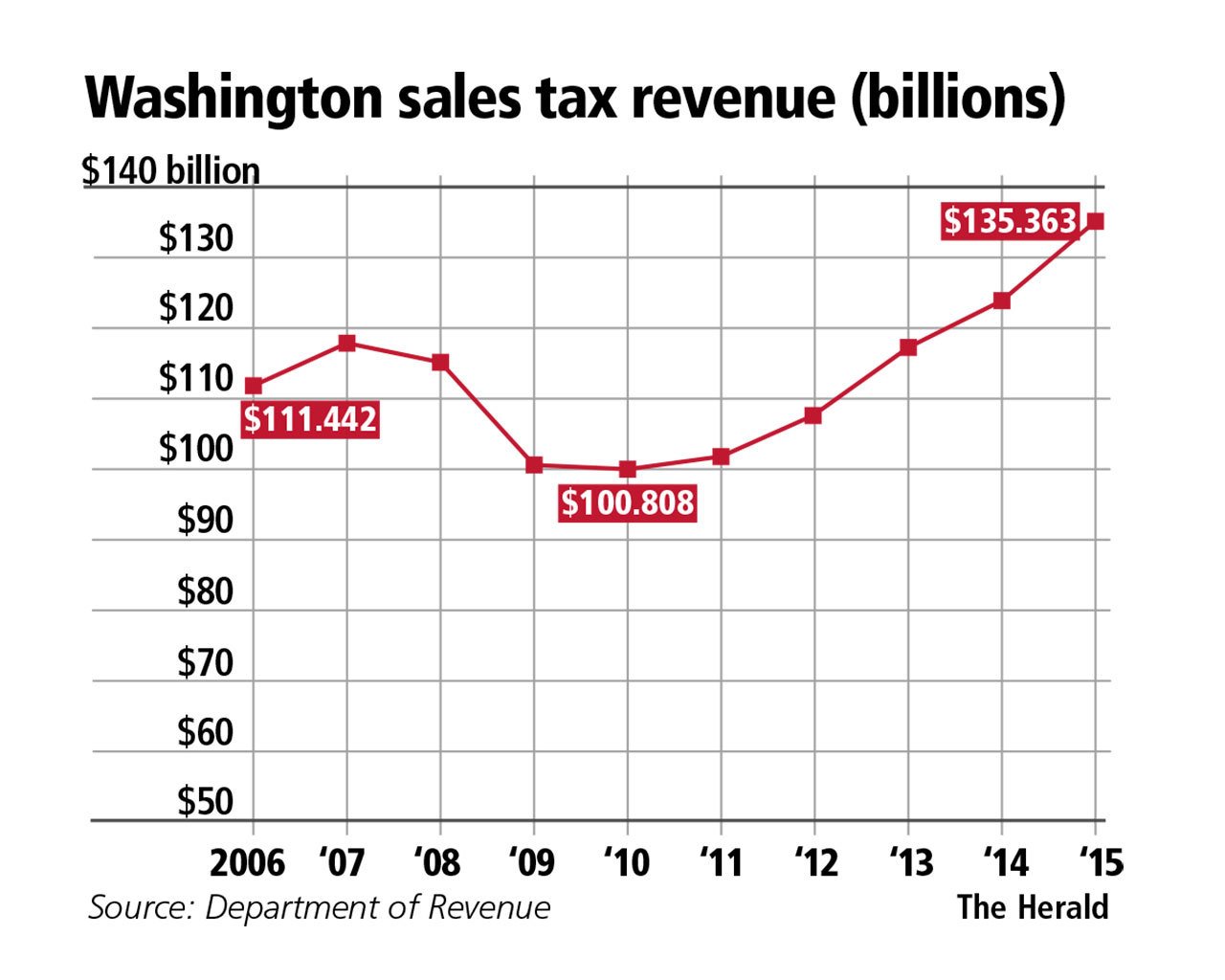Despite the announced closures of Macy’s in Everett and Sears at the Alderwood mall, one measure of the health of retail appears bright.
That’s taxable retail sales.
Washington recorded its biggest quarter for taxable retail sales in years with $36.8 billion in sales for second quarter 2016, which runs from April to June.
Taxable retail sales includes “everything a consumer might purchase from a vehicle to a book to clothing,” said Kim Schmanke, the state Department of Revenue director of communications. It also includes purchases made by businesses for construction, utilities, mining, forestry and fishing.
Is the growth in taxable retail sales due to an increase in online purchases? It’s hard to ascertain, Schmanke said. Stores in Washington aren’t required to differentiate the types of sales — purchase made online versus purchases made in brick-and-mortar buildings — when reporting tax information.
Taxable retail sales is a good indicator of consumer confidence, said Anneliese Vance-Sherman, a regional labor economist based in Everett for the state Employment Security Department.
Taxable retail sales have been on a rollercoaster ride for the state and Snohomish County over the past decade.
In 2006, the state recorded $111.4 billion in taxable retail sales. That rose to $118.9 billion in 2007. Then the recession took effect and the numbers dropped quickly.
The bottom hit in 2010 with $100.8 billion in taxable sales. Ever since then, the taxable retail sales for the state have been on an upward trajectory. The state climbed above the pre-recession level in 2014, reaching $124.8 billion.
In 2015, the figure climbed to $135.3 billion.
Snohomish County has followed a similar path. The county reached $11.7 billion in taxable retail sales in 2007.
That dropped to a low of $9.6 billion in 2009 before making a steady climb upward. The county didn’t reach pre-recession levels of retail sales until 2015. Retail taxable sales, along with employment and household income, put together are telling a similar story, Vance-Sherman said.
People are spending more because they have more confidence in their employment and, in some cases, maybe have more disposable income.
She noted that employment rebounded in Snohomish County more quickly than any other part of the state, even faster than King County.
But she noted that consumers didn’t seem to feel comfortable about their employment until the past couple of years.
Vance-Sherman pointed out that rising housing costs could have put a crimp in disposable income, holding back retail spending as well.
Talk to us
> Give us your news tips.
> Send us a letter to the editor.
> More Herald contact information.

























